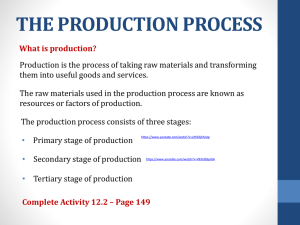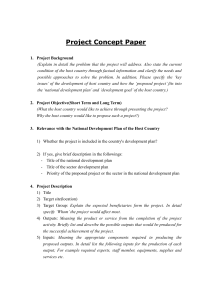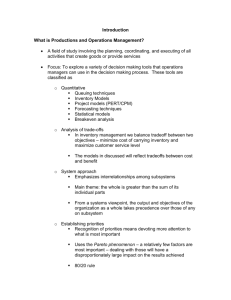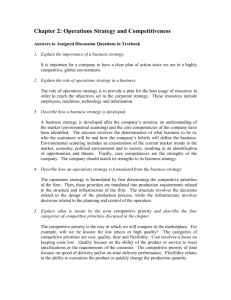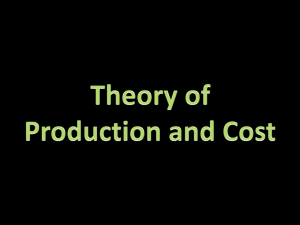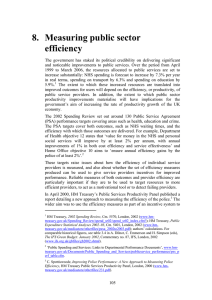Efficiency and Effectiveness = Productivity
advertisement
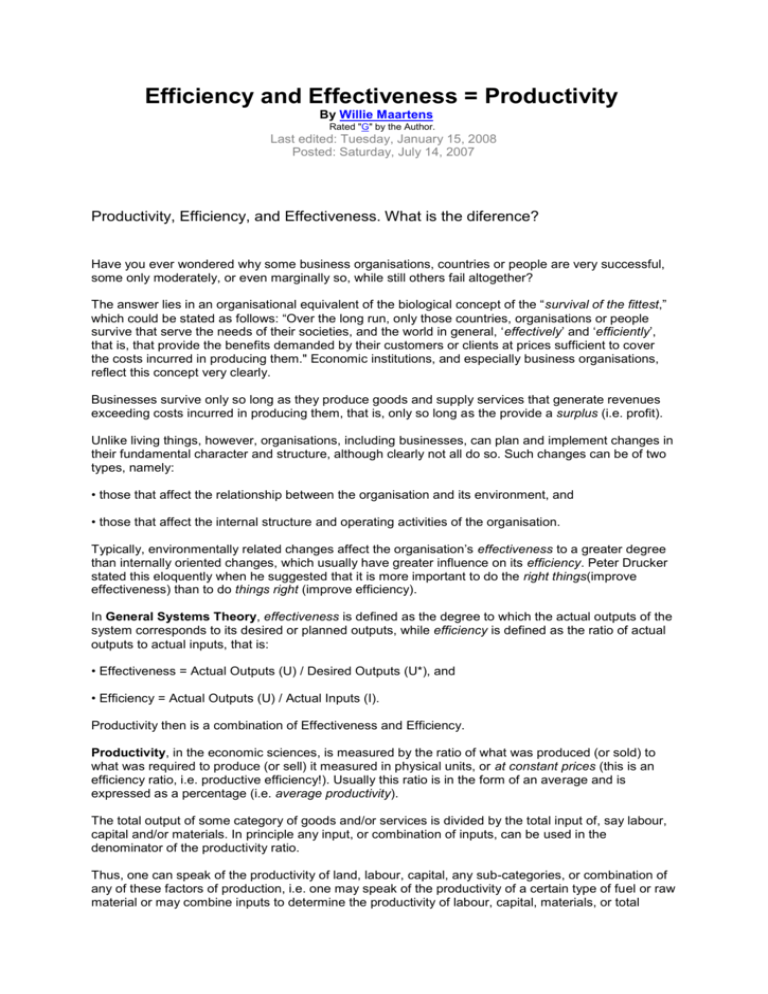
Efficiency and Effectiveness = Productivity By Willie Maartens Rated "G" by the Author. Last edited: Tuesday, January 15, 2008 Posted: Saturday, July 14, 2007 Productivity, Efficiency, and Effectiveness. What is the diference? Have you ever wondered why some business organisations, countries or people are very successful, some only moderately, or even marginally so, while still others fail altogether? The answer lies in an organisational equivalent of the biological concept of the “survival of the fittest,” which could be stated as follows: “Over the long run, only those countries, organisations or people survive that serve the needs of their societies, and the world in general, ‘effectively’ and ‘efficiently’, that is, that provide the benefits demanded by their customers or clients at prices sufficient to cover the costs incurred in producing them." Economic institutions, and especially business organisations, reflect this concept very clearly. Businesses survive only so long as they produce goods and supply services that generate revenues exceeding costs incurred in producing them, that is, only so long as the provide a surplus (i.e. profit). Unlike living things, however, organisations, including businesses, can plan and implement changes in their fundamental character and structure, although clearly not all do so. Such changes can be of two types, namely: • those that affect the relationship between the organisation and its environment, and • those that affect the internal structure and operating activities of the organisation. Typically, environmentally related changes affect the organisation’s effectiveness to a greater degree than internally oriented changes, which usually have greater influence on its efficiency. Peter Drucker stated this eloquently when he suggested that it is more important to do the right things(improve effectiveness) than to do things right (improve efficiency). In General Systems Theory, effectiveness is defined as the degree to which the actual outputs of the system corresponds to its desired or planned outputs, while efficiency is defined as the ratio of actual outputs to actual inputs, that is: • Effectiveness = Actual Outputs (U) / Desired Outputs (U*), and • Efficiency = Actual Outputs (U) / Actual Inputs (I). Productivity then is a combination of Effectiveness and Efficiency. Productivity, in the economic sciences, is measured by the ratio of what was produced (or sold) to what was required to produce (or sell) it measured in physical units, or at constant prices (this is an efficiency ratio, i.e. productive efficiency!). Usually this ratio is in the form of an average and is expressed as a percentage (i.e. average productivity). The total output of some category of goods and/or services is divided by the total input of, say labour, capital and/or materials. In principle any input, or combination of inputs, can be used in the denominator of the productivity ratio. Thus, one can speak of the productivity of land, labour, capital, any sub-categories, or combination of any of these factors of production, i.e. one may speak of the productivity of a certain type of fuel or raw material or may combine inputs to determine the productivity of labour, capital, materials, or total productivity. Productivity can also be expressed as the change in output divided by the change in input (i.e. marginal productivity). The term output includes all goods and services (products) that meet human needs. In other words, not only the yield of industrial and agricultural products, but also the rendering of services by medical practitioners, teachers, retailers, office workers, government departments, transport, etc. Output may be expressed either in physical units or in money terms, depending on circumstances, i.e.: V(Utt) = Q(Ut) X P(Ut), or value equals quantity times price per unit. Where, V = value in monetary terms, Q = quantity in physical terms, P = price per unit, U = Output, and t = the time period. Input involves the use and application of materials, labour, land, energy, and capital goods (assetsmachinery, tools, facilities, equipment), etc. Input may also be expressed either in physical units or in money terms, depending on circumstances, i.e.: V(itt) = Q(it) X P(it), or value equals quantity times price per unit. Where, i = an individual input. I = a combination of inputs. And productivity can now be expressed as V(Utt) / V(itt) = Q(Ut) / O(it) X P(Ut) / P(it), or Productivity = Efficiency x Price Recovery, for a certain time period (t). Productivity is often expressed in physical units such as m^2 of a product produced per man-hour, tonnes of casting per production-hour, standard units produced per machine-hour, etc. But productivity can also be expressed in real money terms, i.e. at constant prices: V(in0) = Q(in) x P(i0) … where n = the review period, and 0 = the reference period. The value in the period ‘n’ is now expressed in terms of the price in period ‘0’. It is important two remember two facts, namely: • Productivity is not production. The former is the quotient of output over input quantities, while the latter expresses the quantity of output only. • Productivity does not refer to labour only. Labour is only one of the resources that are used in the production process. Where production does not only mean manufacturing, but any process where a product or service is produced. In practice it is customary to indicate the relationship between the output and the input of a single factor of production – whether it be labour, materials or capital. This relationship is simpler to determine than total or multi-input productivity measures and is termed partial productivity measurement. The partial output-input ratio is applicable to both the values of outputs and inputs (preferably at constant prices), and physical outputs and inputs, that is four possible configurations. Multi-input productivity index numbers are also known as total-factor productivity or net output measures. These measures are based upon net output (value added, profit, etc.) rather than the more common gross output (production/sales). Value added can be defined as gross output minus the cost of such brought-out production goods as materials (raw materials, packaging, consumables, energy, etc.), components, and so on. If the relationship between total output and individual input is used as a yardstick for productivity, the result may be biased. Comparisons of input and sales figures can also be misleading, since the selling price has to be sufficient to recover the cost of the raw materials and indirect materials purchased, as well as services rendered by third parties. The purchase price, on the other hand, includes the profits of the suppliers. To obviate this type of inaccuracy in measuring productivity — especially in firms where the materials consumed and the services rendered by third parties are a major component of the output — the value added (net output) of a firm is compared with the input. The value added represents only the value added to raw materials by the production and marketing processes of an organisation. This should give a better indication why certain businesses are more successful than other, and how a business can become even more competitive.
